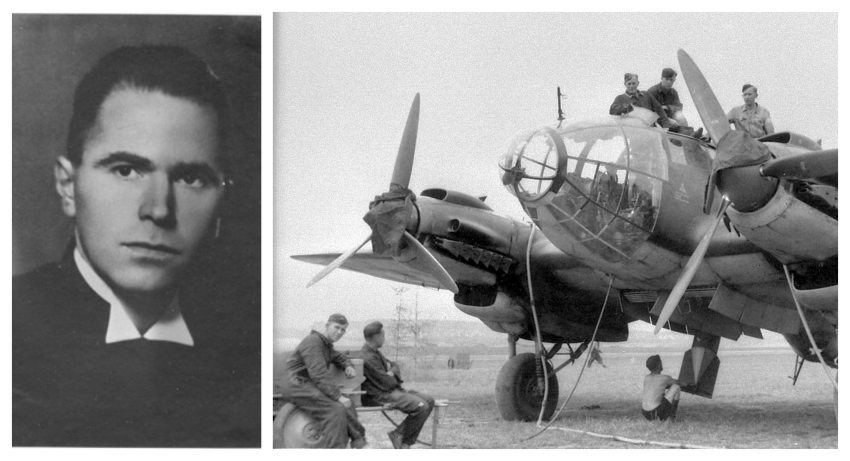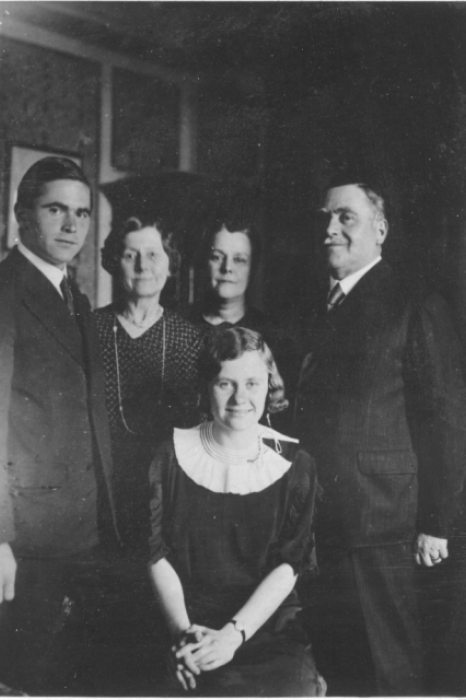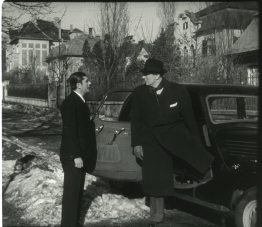Saving Jews with currant jam – The fascinating life story of the unjustly forgotten Géza Soos
To fly a stolen German plane over the front to the Allies, to save the lives of a dozen Jews and prisoners of war with currant jelly, or to help people who fled the country. These are not scenes from a James Bond film, but episodes from the life of Géza Soos, who is barely known in our country today.

On a late autumn day, eight people are waiting on the quay in Újpest, between warehouses built into the retaining wall. One of them is a young woman who is being smeared with jam from a jar by Raoul Wallenberg. Meanwhile, Géza Soos, Pál Szalai, Budapest’s police commander, Wallenberg's driver, two armed officers, and the woman's husband wait for their guard to give the signal. They are waiting for a lorry on which the Germans are reportedly transporting prisoner-of-war airmen and Polish Jews.
When the signal arrives, the woman crawls out into the road, with the currant jelly that looks like blood on her head, and waves to the approaching car, asking for help.
The lorry slows down and then stops. The driver and his armed guard get out, but at that moment the hiding men surround them and disarm them and the two German soldiers guarding the prisoners in the back. The 14 freed prisoners are given civilian clothes and taken to a safe place. The four soldiers are also re-dressed, hidden by Géza Soos, and released in December in exchange for the release of 40 Jews. This 1944 incident was described by Lajos Koncz in the magazine Beszélő, based on Wallenberg's diary.
This was not a single incident, Géza Soos dedicated his entire life to helping and saving others and to doing what was in the best interest of his country and what the Bible instructed him to do. He is an undeservedly forgotten hero of twentieth-century Hungarian history.
The right way is to help
– You're not going to strangle this child – said Géza Soos, then a teenager, to a desperate pregnant woman in the Mária Valéria slum.
– But who will get him food? Who will give him clothes? Who will baptize him?
– We will.
This is how Géza Soos and Zsófia Naszádi, two high school students from Kőbánya, became the godparents of the unborn child, little Zsófia, and the saviours of her life.
Géza Soos, born in 1912, was a student at the Szent László High School in Kőbánya, Budapest, where he and his peers regularly helped families in the Auguszta and Mária Valéria slums.
He became involved in Reformed youth organizations at an early age, serving as secretary general of the Soli Deo Gloria Reformed Students' Union at the age of 22 and president at the age of 24. He also gave the graduation speech of his class, and already then he expressed the idea that the spread of poverty and disease was "driving Hungarian life deeper and deeper with a loud avalanche", and that the only way forward was to help. In this 1930 school speech, Géza Soos's whole life is already contained.
At the same time, he was never satisfied with himself, he wrote in one account: "I was SDG's most despicable worker [...] but the Lord's grace is greater than our weaknesses." Géza Soos, after graduating from law school in 1935, continued to travel the country while working, speaking to young people about his faith, the social situation of Hungarian society, and the Nazi threat to the nation.
In capital letters in Wallenberg's calendar
The outbreak of the Second World War found the young official working in the Information Department under Prime Minister Pál Teleki, and after Teleki's suicide, he was transferred to the Foreign Ministry. He used his government positions to counter the German advance, rescue the persecuted, and assess the possibility of a way out of the war. In 1943, he helped to organize the Conference at the Soli Deo Gloria Reformed Students' Association camp in the village of Balatonszárszó. Géza Soos guaranteed the government that the occasion would not be used for anti-government activities.
After the German occupation of Hungary, the rescue of the persecuted Jews became a priority, and people were driven to the SDG camps in the diplomatic car acquired by Géza Soos, where as many persecuted people as possible were hidden.
But the homes of the members and leaders of the Soli Deo Gloria Reformed Students' Association and the Hungarian Community, which later became famous for the trial, were also full of hidden people. Pastors, priests, state employees, and secret printers produced fake baptismal certificates for Jews. Soos played a very important role in getting the report, known as the Auschwitz Protocol, to Governor Miklós Horthy, who stopped the deportation of Jews from Budapest.
When Swedish diplomat Raoul Wallenberg arrived in Budapest, one of the first things he did was to contact Géza Soos, whose name was written in capital letters in his diary. An example of their joint activities is the story told at the beginning of this article. For understandable reasons, there is only limited information on exactly how many people they saved.
Stealing a military aircraft
Although the Germans did not take direct action against Géza Soos, who worked in the Foreign Ministry, for a long time, after the Arrow Cross takeover he was forced to go into hiding, for example in the attic of Pastor Dezső Fónyad in Monor. After the arrest of the leaders of the resistance, including Endre Bajcsy-Zsilinszky, Géza Soos said goodbye to his pregnant wife Ilona Tüdős, and set off with his fellows to carry out a plan worthy of an action film.
On the night of December 8-9, 1944, a small group snuck onto the military airfield in Pápa, climbed onto a Heinkel He-111 bomber plane with German supremacy markings waiting there, and took off at dawn, stealing the military plane in the middle of a war.
It was not only the potential chasers that they had to worry about, Allied forces were already flying in the opposite direction over the Adriatic Sea. Off the coast of Italy, American fighter jets forced them to land. An interesting group got off the plane: Air Force Major Domokos Hadnagy with his wife and their one-and-a-half-year-old child, first lieutenant Árpád Toperczer, Sergeant Sándor Rakovich, an engine mechanic, Géza Soos and J. A. Bentinck, a Dutch lieutenant who had escaped from German captivity. Among other evidence, they brought the English translation of the Auschwitz Protocol to the Allies, including news of the Hungarian resistance.
An honest man cannot cooperate with the communists
The passengers of the plane were under suspicion, and interrogated for months by British and American officers as prisoners of war. Meanwhile, in Budapest, Géza Soos's daughter was born, and Soos's mother and elder daughter Ildi died in the besieged city. The next time he met his family was in Geneva after the war. It was here that he completed his theology studies after a brief attempt to return home. He wrote: "In 1946, in Budapest, the Communists again tried to kill me because I refused to join the communist party or at least sign the declaration of obedience. [...] I soon realized that there is no way out: an honest man cannot cooperate with the communists."
In Germany, he was engaged in the pastoral care of some 14,000 Hungarians, as well as Czech, Ukrainian, Polish, and Latvian Protestants who were stranded there. In November 1948, he travelled 3,380 km by car and 1,750 km by train, finding some of them in such misery that he gave them his last pennies and sometimes even his change of clothes. In 1951, at the invitation of the Hungarian-Americans, he moved to the United States with his wife and five children.
He has cared for the diaspora, taught at universities and lectured in church and other communities. He also became one of the editors of the Új Magyar Út (’New Hungarian Way’) magazine, writing articles.
He became known to the entire Hungarian immigrant community.
The only way home
On September 5, 1953, despite a raging storm, Géza Soos got into a car with Ferenc Koszorús to preach at the Pittsburgh Reformed Church. Due to poor visibility after a bend in the road, Soos' car suddenly crashed into the bridge abutment. Ferenc Koszorús was unconscious and seriously injured, and Soos rushed to a nearby family home to seek help. He helped lift Koszorús into the ambulance and then sat down next to the driver. On the way, he complained of feeling unwell and then fell off the seat. At the hospital, only his death could be confirmed. He was only 41 years old. Géza Soos was laid to rest in Ligonier, Pennsylvania. At his funeral, Albert Wass said about him: "A giant tree has fallen, Hungarians! A huge mountain has fallen: a cliff. Hungarians all over the world: if you want to repay him for what he did for you, follow the path he marked. Every Hungarian should know - these are the words of Géza Soos - that there is only one way home. The way of love and humility in Christ."









